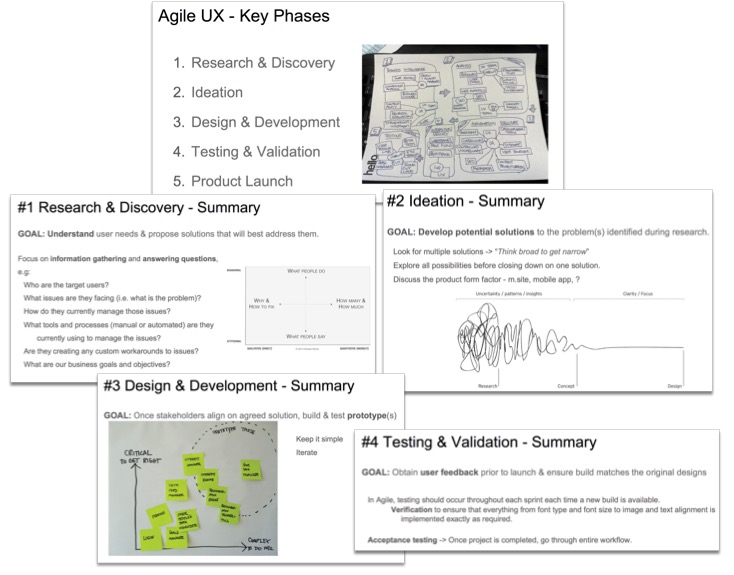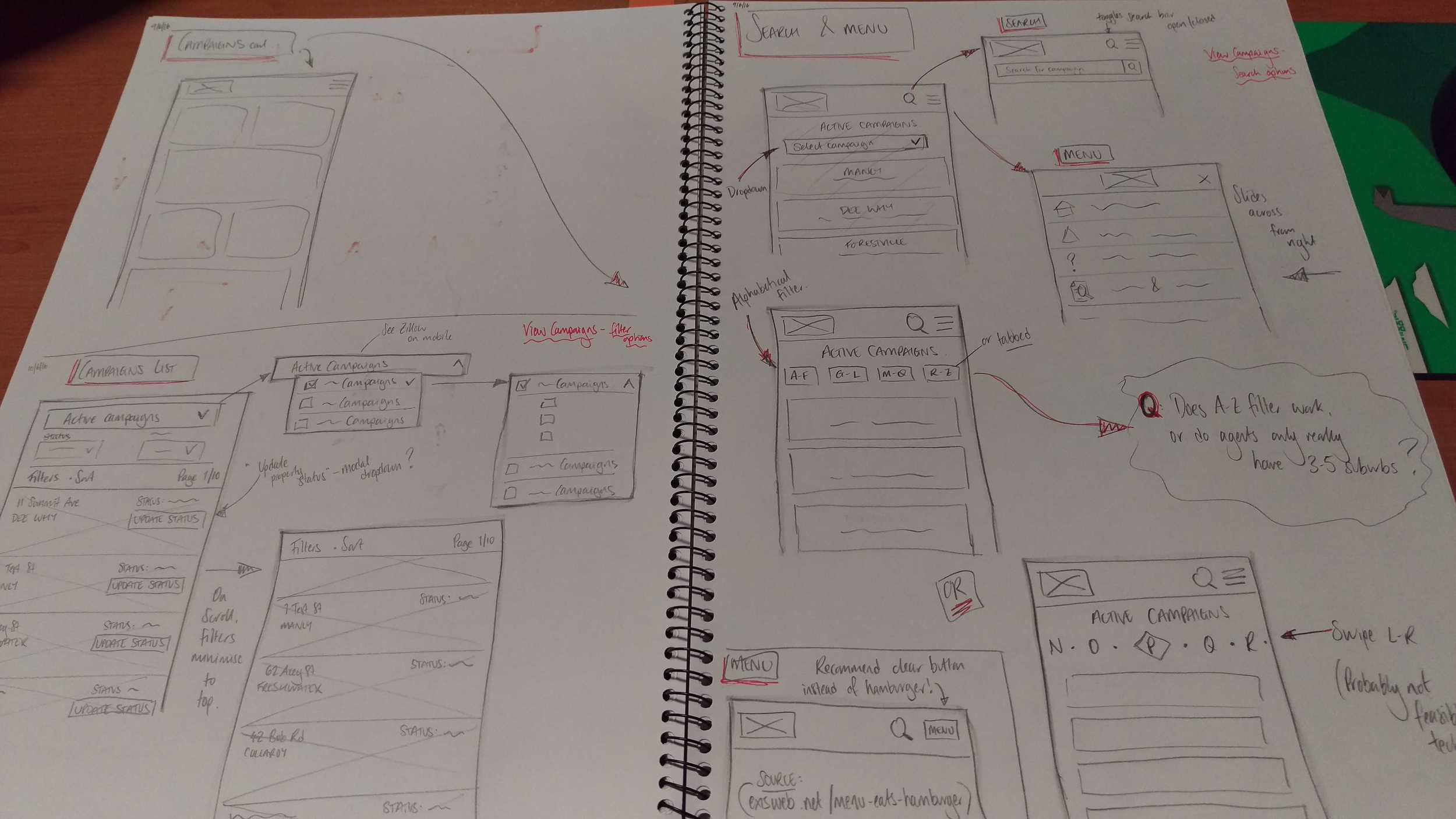Mobile product innovation
Research into a new agent-facing mobile product.
My role: UX Designer (in-house) - project planning, research, ideation and high-level design
Platform: Mobile (device agnostic)
Overview
Campaigntrack is the industry leader in real estate marketing, with a desktop software platform that is used by elite real estate agencies for both property and agency marketing. The Campaigntrack Mobile product was intended to be a point of difference over competitors, offering users faster, easier task completion when they're on the go.
During an initial discussion with the Product Director/CEO, Product Owners and Sales Director, several tasks were identified for likely inclusion in the MVP which were assumed to be typical of the tasks that our potential users would find valuable.
My aim was to validate whether the key tasks and features specified by the business stakeholders matched what our users would need, and to identify the main problems that our new mobile product could help solve for users.
Key components:
Project planning
Product assessment (existing state)
Competitor analysis
User research (user interviews, user survey)
Stakeholder presentations
UI patterns research
Sketching
NOTE: Many images are low-res or blurred and cannot be expanded for confidentiality purposes.
Please contact me if you would like further information.
PLANNING
To begin I created an overview of the project outlining high-level business goals, user goals, strategy etc in order to answer to any outstanding questions I had and to make sure that our goals were clear.
I then developed a UX project plan for the initial phases of the project, working towards a goal of creating a basic prototype to show users for validation and feedback.
I split the time available into several phases:
Planning
Research & discovery
Ideation
Design & development (with concurrent testing & validation)
Before launching into the research phase, I communicated my plan to the rest of the team and key stakeholders, to ensure that I had buy-in from the outset. I also included information clarifying the role of UX within an Agile project, as several members of the project team were new to both Agile and UX.
RESEARCH & DISCOVERY
My focus was on information gathering, identifying and understanding our target users and the issues they were facing, how they currently manage those issues and learning about any tools or processes they currently use.
Product assessment (existing state)
I reviewed the existing Campaigntrack solution to identify what might be replicated in the mobile version, what could to be improved and what was not relevant.
To do this I split my time between desk research - familiarising myself with the existing system and typical user tasks - and catching up with core internal users of the product who could help to guide me through any problematic task flows and share in-depth system knowledge.
I mapped out the key user flows initially with screenshots and annotations, and subsequently as high-level user flow diagrams.
Competitor analysis
I wanted to find out if there were any similar solutions already out there and, if so, what type of functionality they provided.
I reviewed as many similar companies as I could find, again speaking to colleagues about any specific solutions being used by our clients and sales managers who had heard about upcoming competitors and innovators in the real estate industry.
User research
I planned to interview several of our customers who best fit the persona of the typical user of the new product, to find out more about their current workflows and pain points. However, recruitment proved difficult as real estate agents have incredibly busy schedules. I carried out a few user interviews then decided to also launch a short online user survey.
I analysed my research findings and synthesised them into a slide pack that I presented to several areas of the business - the product team, Product Director/CEO and key account managers and coordinators. I was keen to hear their thoughts and augment my findings with any internal observations.
Finally, I wrote a problem statement so that we could be clear on the problem we were trying to solve throughout design and development, and created three proto-personas* that typified the different users that our mobile product could help.
*Proto-personas are a non-research-backed articulation of a customer archetype, based on what we know or think we know about the users–they're generally used when there isn’t enough time or budget to fully research a persona.
IDEATION
Following my research phase, I was keen to start collaborating with the rest of the team so that we could create alignment on our vision for the product, the product form factor (mobile site vs. mobile app), design directions, MVP & feature prioritisation.
After consulting with the product team I worked on some initial concepts, developing high-level sketches of multiple solutions that were then discussed and iterated on.
CONCLUSION
Unfortunately I didn't see the completion of the Campaigntrack Mobile project as the strategic direction of our product team changed and the company directors decided that several roles were no longer required.
I elected to take a redundancy as I could see that UX would not have due consideration in future projects and I was keen to apply my UX skills elsewhere.


















